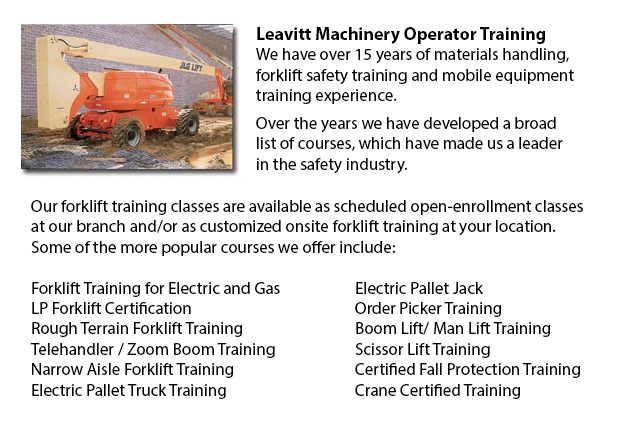
Boom Lift Operator Training Fort Mcmurray - A cherry picker refers to a type of aerial work platform. Cherry pickers have a platform or bucket at the end of a hydraulic lifting system. The device is likewise called a man lift, boom lift, hydraladder or basket crane.
The bucket of platform is occasionally set onto or mounted to a truck or other motor vehicle and is occasionally called a bucket truck. Other vehicles that could be made use of are self-moving platform, stand-alone trailers or flat back pickup vans. The worker stands and starts working in the bucket. The person in the bucket often comprises an upper set of controls allowing manipulation of the position of the bucket. The bucket's reach could be lengthened on several models by telescoping to be able to adjust the lifting arm. Automatic safety controls prevent tipping. Articulated boom lifts are recommended when it is needed to clear obstacles or for working in tight spaces.
As the name suggests, cherry pickers were constructed for picking fruit in trees at high levels. Cherry pickers are used in various other businesses, like for instance exterior painting, construction and mining. Occasionally they are utilized for cleaning windows on high rise. The machines are used to service cable television, electrical equipment and telephone on utility poles. Sometimes, firefighters utilize cherry pickers, called snorkels, when ladders are insufficient. At Christmas season, civic workers can be seen hanging lights and banners within cherry pickers.
Boom Lift Operator Safety Training
Suggested training standards for safety awareness are set by local regulations. Curriculum includes safe operation procedures through a combination of classroom and hands-on components.
Sessions comprise the following topics: general equipment safety factors; current regulations and applicable issues; features of boom lifts; fall protection, other stationary work platform and scissor lifts.
Also included are the various lift operator's responsibilities, like: workplace checks; function test procedures; knowing and avoiding hazards; pre-operation check procedures; and equipment manufacturer's instructions.
-
Telehandler Training Fort Mcmurray
Telehandler Training Fort Mcmurray - Telehandlers or also called Telescopic handlers are very popular piece of heavy construction equipment most often utilized in agriculture and construction industries. These machines have extreme reaching capabilit... More -
Counterbalance Forklift Training Fort Mcmurray
Counterbalance Forklift Training Fort Mcmurray - Counterbalance Forklift Training courses are always in high demand. The Counterbalance forklift is a forklift that is made along with a weight that counters the balance, evenly spreading the weight of... More -
Heavy Equipment Training School Fort Mcmurray
Heavy Equipment Training School Fort Mcmurray - HEO or the heavy equipment operator courses will provide you with the knowledge and skills required in order to enter the workforce as an entry level heavy machine operator. In this 12 week course in ad... More -
Operator Safety Training, Re-Qualification Training, In-House Instructor Training in Fort McMurray
Used in just about all boat yards, industrial construction sites or warehouse operations, the forklift is a very important component in order to help pick up and transfer supplies. The reach feature of a lift truck could help improve the applications... More -
Heavy Equipment License Fort Mcmurray
Heavy Equipment License Fort Mcmurray - A heavy equipment license can be obtained by finishing a certification and preparation course at a private training school or a vocational school. This license would qualify you to operate various types of heav... More -
Boom Lift License Fort Mcmurray
Boom Lift License Fort Mcmurray - To operate an aerial boom lift, operators must be licensed through training that can be obtained utilizing both practical training and classroom sessions and by obtaining a boom lift license. Instruction must be give... More -
Skid Steer Loader Training in Fort McMurray
A skid-steer loader is actually an engine powered machine that consists of a small and rigid frame. It is outfitted along with lift arms which are used to attach to different labor saving attachments and tools. Normally, skid-steer loaders are four-w... More -
Order Picker Ticket Fort Mcmurray
Order Picker Ticket Fort Mcmurray - Order picker's enables warehouse employees to lift pallets using forks. Likewise called a stock picker, this electrically-powered equipment is like a forklift except that an order picker is likewise utilized to lif... More

Forklift Training Fort McMurray
TOLL FREE: 1-888-254-6157
Fort McMurray, Alberta
forklifttrainingfortmcmurray.com
Email Us
About Us


